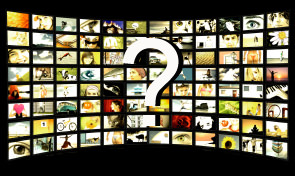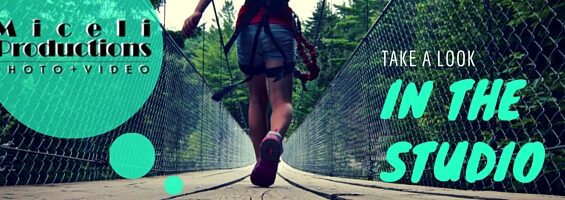
Often it seems like people in the world of professional video speak a totally different language that relies heavily on slang for technical and creative concepts. Guilty as charged! As media professionals we do in fact have a unique vocabulary to what we do. A basic understanding of video terms helps business owners be informed consumers when contracting video services and be informed collaborators on a custom video project.
Part 1 of this series, (A - D) can be viewed HERE
Exposure: The quantity of light reaching the video. Even with a professional quality camera, footage can be underexposed or overexposed by the camera operator. There are limited options to make under- or over- exposed footage better in the editing process. It is crucial for a camera operator to have experience with maintaining optimal exposure in a variety of environments of light (dark theaters, bright daylight, concert lighting, etc.).
Fade: A transitional effect consisting of a gradual change in the intensity of an image or sound, such as from a normally lit scene to darkness (fade out, fade-to-black) or vice versa, from complete black to full exposure (fade in), or from silence to sound or vice versa; a 'fade in' is often at the beginning of a sequence, and a 'fade out' at the end of a sequence. You might see this term used in storyboarding.
Green Screen: A bright green fabric that is hung behind the action being recorded on camera. The green background allows an editor to insert a particular background or create special effects. Busy business owners who are the voice and face of their business often don't have time to commit to long video shoots on location; green screen can therefore be a great solution for this, allowing different locations to be put in after the fact.
High Definition or HD: Video footage shot in a high-definition format, which means that the frame size is larger than SD (standard definition), and each frame holds much more digital information. As a result, picture quality and file sizes are much higher than SD video. High def is a general term that can describe different frame sizes, so it's important to understand that some HD video can be higher-definition than other HD video. Generally, HD video is of excellent quality and looks great no matter where it's shown - on the web, on a dvd, or projected on a screen. In today's world, HD video has become a production standard. (Miceli Productions has more than 5 years experience working in HD, we committed to the format as soon as it emerged).
Interactive: The back-and-forth dialog between the user and the computer. Games are always interactive, and most computer applications are interactive. More and more web commercials these days are interactive (commercials on Hulu.com are a great example) and YouTube videos with action overlays can be interactive. Click here to see Lombardi on Broadway example of interactive commercial.
JPEG: A still image file format developed by the Joint Photographic Experts Group (no joke) that can compress photographic images into much smaller file sizes while sacrificing only a little image quality. A cross platform-friendly file format useful if you are providing images for a custom video project or want image files pulled from a video project to use in email, web applications or print.
Lav, Lavaliere or Lapel Mic: A small microphone that clips to your lapel or neckline, usually wireless. A lav is an option for recording high quality sound when the shot is too wide for use of a boom mic.
Montage: Refers to a filming technique, editing style, or form of movie collage consisting of a series of successive short shots or images (often disconnected in time or place) that are rapidly juxtaposed into a coherent sequence to suggest meaning or a larger idea; usually a montage is not accompanied with dialogue, but uses music to drive the footage; an accelerated montage is composed of shots of increasingly-shorter lengths.
